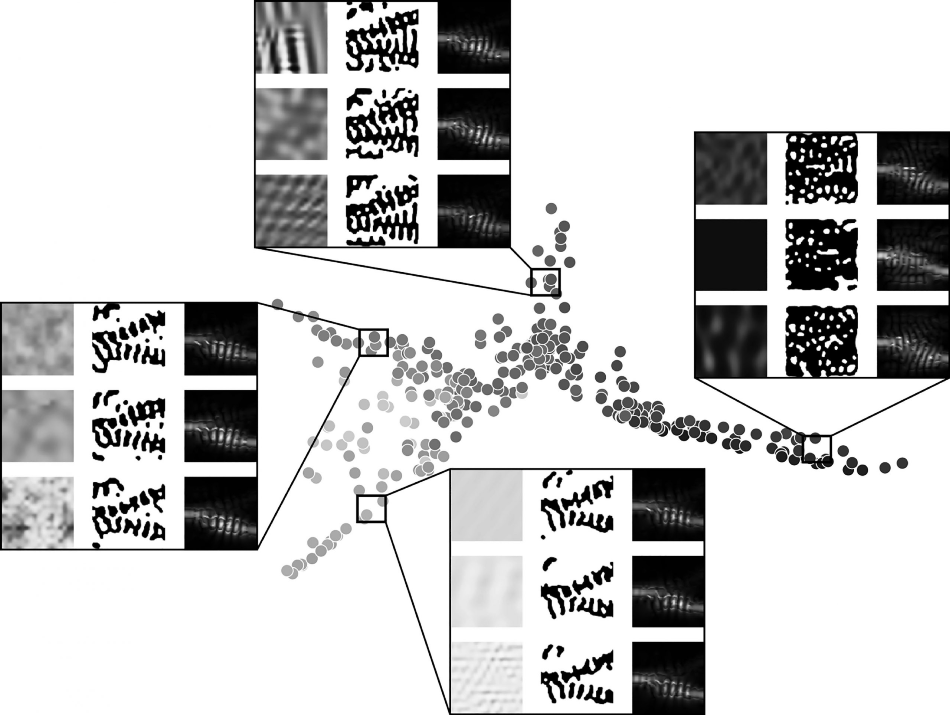Mar 11 2020
Scientists at Stanford University have recently developed an inverse design codebase, known as SPINS. The inverse design can aid researchers in investigating different kinds of design methodologies to identify nanophotonic and optical structures that can be fabricated.
 Photonic inverse design produces an assortment of nonintuitive designs that can achieve better performance in smaller footprints than their traditionally designed counterparts can. Despite the multitude of possible designs for any particular task, analysis of the designs for a beam splitter reveals how the algorithm produces devices that can actually be classified into different types based on their structure and underlying physical principles. Image Credit: Logan Su.
Photonic inverse design produces an assortment of nonintuitive designs that can achieve better performance in smaller footprints than their traditionally designed counterparts can. Despite the multitude of possible designs for any particular task, analysis of the designs for a beam splitter reveals how the algorithm produces devices that can actually be classified into different types based on their structure and underlying physical principles. Image Credit: Logan Su.
In AIP Publishing’s Applied Physics Reviews journal, Logan Su and collaborators assess the potential of inverse design for fabricable nanophotonic and optical structures. They also present and describe how their own inverse design codebase can be utilized.
The idea of inverse design is to use more sophisticated optimization algorithms and automate the search for a structure. The ultimate goal is to have a designer input their desired performance metrics and simply wait for the algorithm to generate the best possible device.
Logan Su, Researcher, Stanford University
Integrated photonics could be used in many promising applications, such as sensing, optical interconnects, and quantum computing, to name a few.
SPINS was inspired by well-known machine learning libraries like PyTorch and TensorFlow. It is a photonic design framework that lays emphasis on flexibility and reproducible outcomes. The researchers had used SPINS internally to develop a range of devices, and they are making it available for other scientists as well.
“The mathematics behind our optimization techniques come from the mathematical optimization community,” added Su. “But we also borrow ideas from the optimization community in mechanical and fluid mechanics, where they use similar optimization methods to design mechanical structures and airfoils before their adoption in photonics.”
Inverse design “automates the design process for optical and photonic elements,” Su further stated. “Traditionally, photonic devices are hand-designed, in the sense that a designer first comes up with the basic geometric shape of the structures, such as a circle, and then performs a few parameter sweeps of the radius of the circle to improve device performance.”
This is a labor-intensive process and is likely to overlook a large set of devices with more intricate shapes that are capable of more improved performance.
Replacing electrical interconnects with photonic interconnects within data centers, for example, could enable an increase in memory bandwidth while substantially decreasing energy costs.
Logan Su, Researcher, Stanford University
While photonic neural networks have the potential for faster operation speeds with lower energy needs as opposed to electronic hardware, metasurface optics could enable new optical functionalities that are more economical, with orders of magnitude smaller than their bulky and conventional optical elements.
Part of the barrier to the adoption of these technologies is the performance of the photonic components that comprise that system. By developing a better optimization method for designing these photonic components, we hope to not only improve the performance of these technologies to the point of commercial viability but also open up new possibilities for integrated photonics.
Logan Su, Researcher, Stanford University